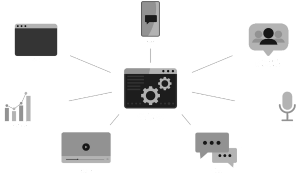In healthcare today, you face a host of challenges including rising expenses, lack of interoperability, and regulatory pressures. But data overload shouldn't be one of them.
In this blog, we are going to discuss:
- Population health
- Pharmacy Supply Chain
- Labor Productivity
- Care Transitions
- Clinical Quality
- Predictive LOS & Readmissions
WHAT ARE THE UNDERLYING DRIVERS FOR TRANSFORMATION?
System change, cultural change, and process change all propel transformation. System change focused on the new organizational models and funding designed to incentivize and support improved care. For example: value-based reimbursement, Accountable Care Organizations, integrated practice units. Cultural change is about the changing roles and responsibilities, data-first initiatives, strong executive sponsorship, effective team work, staff and patient empowerment, greater transparency, and collaboration. Process change is caused by an evidence-based redesign of core clinical, business, and other processes. It should incorporate user-centricity, innovation, and an outcomes-based approach.
These drivers of healthcare transformation all require more accurate, granular, and contextual intelligence.
HOW IS POPULATION HEALTH DATA IMPROVING CARE?
Layering publicly available data on top of clinical and claims data allows you to stratify risk, intervene with preventive care, close care gaps, and more. By making data visual and easy to explore, users can uncover actionable insights in real time. This real time aspect allows decision makers to act quickly. Read more on how SME supported Tampa General Hospital during the COVID-19 pandemic.
WHY IS THE PHARMACY SUPPLY CHAIN IMPORTANT TO MONITOR?
The pharmacy supply chain provides insights into how medication is being prescribed and used. By connecting every data point with every other data point, in all your data – you are enabled to see your entire supply chain, so you can optimize order timing and quantity.
HOW DOES LABOR PRODUCTIVITY IMPACT BOTTOM LINE?
Efficiently gathering and analyzing workforce data from disparate sources is essential to achieving optimal staffing levels across departments. Analytics can give you this capability, enabling you to tie together your human resources, staffing, and clinical systems to prevent staffing shortages or overages.
CAN YOU REDUCE THE COSTS OF CARE TRANSITIONS?
With data informing the most appropriate care transition plan and post-acute care path, you can substantially reduce care coordination costs. Having a robust data analytics platform guides users to deliver the right care at the right time, significantly decreasing costs associated with poor engagement and no-shows.
WHAT ROLE DOES DATA HAVE IN CLINICAL QUALITY?
The implementation of MACRA and similar programs globally has increased the financial significance of monitoring and meeting quality metrics, whether you participate in MIPS or APMs. Analytics can drive in-depth understanding of, and ability to optimize, quality trends across any variable.
HOW CAN WE PREDICT LOS & READMISSIONS?
In the US and globally, healthcare organizations are tasked with reducing readmissions and managing length of stay (LOS). But managing care delivery and streamlining mandatory reporting are big challenges – unless you have a data platform that can analyze and predict trends and variations within your patient population. You can harness these critical insights to improve care and quality scores while reducing costs.
If you would like to learn more about SME Solutions Group, Inc. and how data analytics can drive transformation in the healthcare industry, email us at info@smesgroup.com.
.png?width=375&height=150&name=Untitled%20design%20(43).png)




